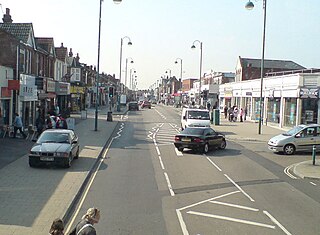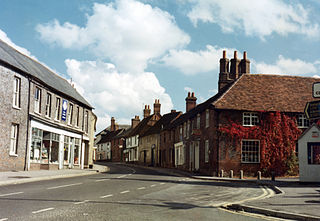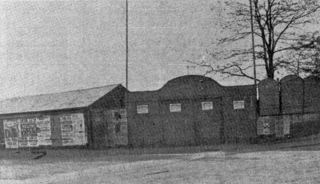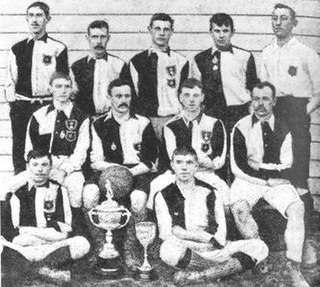Related Research Articles

Southampton Test is a constituency represented in the House of Commons of the UK Parliament since 1997 by Alan Whitehead, a member of the Labour Party.

Shirley is a broad district and a former village on the western side of Southampton, England. Shirley's main roles are retailing and residential. It is the most important suburban shopping area in the west of the city. Housing is a mixture of council houses in the centre of the district surrounded by private housing, with larger suburban houses concentrated in Upper Shirley. Shirley is separated from Highfield by Southampton Common, a large green public space.

Kingsclere is a large village and civil parish in Hampshire, England.

Freemantle is a suburb and electoral ward in Southampton, England.

Millbrook is a suburb and former civil parish of Southampton. As the area developed, several settlements grew within the parish, some of them becoming parishes in their own right, thus reducing the extent of the Millbrook parish. As well as the Millbrook of today, the original Millbrook parish included Freemantle, Regents Park, and Redbridge. Some of these areas are still referred to as being part of Millbrook. The brook that Millbrook was named after is now known as Tanner's Brook.
The 1780 English cricket season was the ninth in which matches have been awarded retrospective first-class cricket status. The scorecards of four first-class matches have survived. The first six-seam cricket balls were used during the season.
The 1788 English cricket season was the 17th in which matches have been awarded retrospective first-class cricket status and the second after the foundation of the Marylebone Cricket Club. The season saw 11 top-class matches played in the country.
John Freemantle was an English cricketer who played for the legendary Hambledon Club.
Andrew Freemantle was an English cricketer who played for Hampshire during the Hambledon Era and afterwards. He was a left-handed batsman, a noted fielder and an occasional wicket-keeper.

The Antelope Ground, Southampton was a sports ground that was the first home of both Hampshire County Cricket Club, who played there prior to 1884, and of Southampton, who played there from 1887 to 1896 as "Southampton St. Mary's F.C."

Freemantle were a football club based in the Freemantle area of Southampton. They were active for 21 years and were one of the early leading pioneers of football in Hampshire. During their brief heyday, at the end of the nineteenth century, they were arch rivals to Southampton F.C.
Frederick William Freemantle was an English first-class cricketer. He was a left-handed batsman and a fast-medium bowler, although which arm he used to bowl is unknown.
George Arthur Nineham was an English amateur footballer who played as a forward for Southampton St. Mary's in the 1890s. He was one of the few locally born players to make the transition from mainly friendly matches to Southern League football.
Frank Englefield was an English professional footballer who played for Southampton in the late 1890s, generally at outside-left although his only Southern League appearance came at left-half.
George Carter was an English footballer and all-round sportsman who played a prominent part in the early history of Southampton Football Club, leading them to success in local cup tournaments and captaining the side in their first FA Cup match in 1891.
William John Stride was an English footballer who made four appearances as a half-back in the FA Cup for Southampton St. Mary's between 1888 and 1894. Throughout his career, he was known as "Banquo" Stride.
George Ridges was an English footballer who made one appearance, at inside-right in the FA Cup for Southampton St. Mary's in 1892.
The 1892–93 season was the eighth since the foundation of St. Mary's F.C. based in Southampton in southern England. It was the second year that the club competed in the qualifying rounds of the FA Cup and the first season that the club embraced professionalism with several players being signed on professional terms. This policy was not to prove a great success initially as the club were not only defeated in the second qualifying round of the FA Cup but also suffered their first-ever defeat in a final of a Hampshire F.A. cup competition.
The 1893–94 season was the ninth since the foundation of St. Mary's F.C. based in Southampton in southern England. For the third consecutive year, the club were eliminated in the second qualifying round of the FA Cup; they were also defeated in the final of the Hampshire Senior Cup.
The first match played by what is now Southampton Football Club, from Southampton in southern England, was by a team from St. Mary's Young Men's Association (YMA) on 21 November 1885. Since then, the club established themselves as a major force in local and regional football before moving up to national level, winning the FA Cup in 1976 and being founder members of the Premier League in 1992.
References
- ↑ "George Freemantle". CricketArchive. Retrieved 26 July 2013.